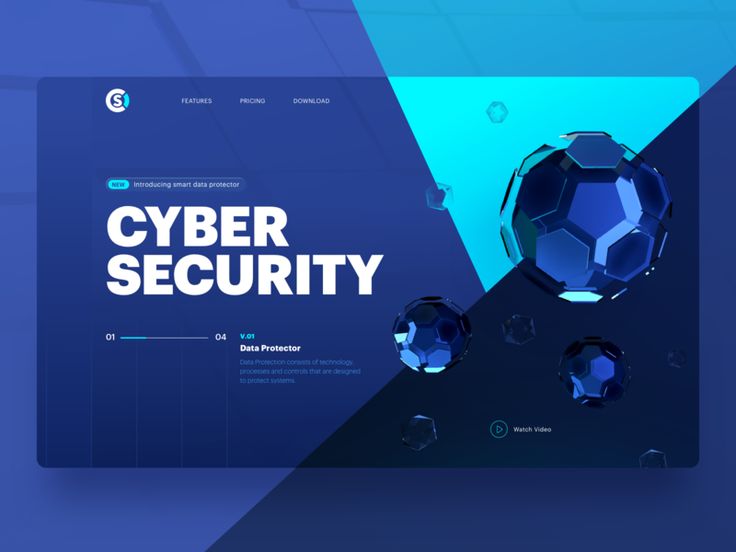In an era marked by ever-evolving cyber threats, ensuring the security of websites has become paramount. While robust security measures are crucial, incorporating security principles into the very design of a website is equally important. In this article, we delve into the significance of enhancing website security through design principles and explore techniques and best practices to fortify websites against cyber threats, safeguard user data, and instill trust.
Table of contents
- 1. Understanding Website Security Design Principles:
- 2. Importance of Security-Driven Design:
- 3. Key Design Principles for Website Security:
- 4. Integrating Security Throughout the Design Process:
- 5. Continuous Monitoring and Improvement:
- 6. User Education and Awareness:
- 7. Secure Third-Party Integrations:
- 8. Regulatory Compliance:
1. Understanding Website Security Design Principles:
Website security design principles involve integrating security considerations into every aspect of the website’s architecture and functionality. By adopting a proactive approach to security, websites can mitigate vulnerabilities and reduce the risk of data breaches and cyberattacks.
2. Importance of Security-Driven Design:
Designing with security in mind from the outset offers several advantages:
- Preventive Measures: Incorporating security measures during the design phase helps identify and address potential vulnerabilities before they can be exploited by malicious actors.
- Cost-Efficiency: Addressing security concerns early in the design process is more cost-effective than attempting to retrofit security measures after the website has been deployed.
- User Trust: Demonstrating a commitment to security through design instills confidence in users, reassuring them that their data is protected and fostering long-term trust and loyalty.
3. Key Design Principles for Website Security:
Several design principles can enhance website security:
- Minimalistic Design: Simplifying the website’s design reduces the attack surface and minimizes the potential points of entry for cybercriminals.
- Secure Authentication: Implementing strong authentication mechanisms, such as multi-factor authentication (MFA), strengthens access controls and protects against unauthorized access.
- Data Encryption: Encrypting sensitive data both in transit and at rest ensures that even if intercepted, the data remains unintelligible to unauthorized parties.
- Input Validation: Validating user input helps prevent common security vulnerabilities, such as cross-site scripting (XSS) and SQL injection, by filtering out malicious or malformed input.
- Regular Updates and Patching: Keeping software and frameworks up-to-date with the latest security patches mitigates the risk of known vulnerabilities being exploited by attackers.
4. Integrating Security Throughout the Design Process:
Security should be considered at every stage of the website design process, from initial concept and wireframing to development and deployment. By involving security experts and conducting thorough security assessments and audits, potential vulnerabilities can be identified and addressed early on, ensuring that the final product meets the highest security standards.
5. Continuous Monitoring and Improvement:
Website security is an ongoing endeavor that requires continuous monitoring and improvement. Implementing tools and processes for monitoring website activity, detecting anomalies, and responding to security incidents in real-time is essential for maintaining the integrity and security of the website over time.
6. User Education and Awareness:
In addition to implementing robust security measures in website design, educating users about best practices for online security is paramount. Providing clear guidance on creating strong passwords, recognizing phishing attempts, and safeguarding personal information helps empower users to protect themselves from cyber threats. Incorporating security awareness training into user onboarding processes and providing resources such as security FAQs or tutorials can further enhance user awareness and mitigate the risk of security incidents stemming from user negligence or ignorance.
7. Secure Third-Party Integrations:
Many websites rely on third-party integrations for various functionalities, such as payment processing, analytics, or social media plugins. While these integrations can enhance website functionality, they also introduce potential security risks. Ensuring that third-party providers adhere to strict security standards and regularly audit their systems for vulnerabilities is essential. Additionally, implementing measures such as sandboxing third-party scripts and limiting their access to only the necessary data and functionalities can help minimize the risk of security breaches originating from third-party integrations.
8. Regulatory Compliance:
Compliance with relevant regulatory requirements, such as the General Data Protection Regulation (GDPR) in the European Union or the California Consumer Privacy Act (CCPA) in the United States, is crucial for enhancing website security. These regulations impose strict requirements for the collection, storage, and processing of personal data, as well as mandatory breach notification obligations. Ensuring that website design and security measures align with regulatory standards not only helps mitigate the risk of legal penalties but also demonstrates a commitment to protecting user privacy and data security.
Conclusion:
In conclusion, enhancing website security through design principles is a multifaceted endeavor that requires careful consideration of various factors, from proactive security measures to user education and regulatory compliance. By integrating security considerations into every aspect of the website’s architecture and functionality, businesses can mitigate vulnerabilities, protect against cyber threats, and safeguard user data. From implementing secure authentication mechanisms to ensuring compliance with regulatory requirements, a holistic approach to website security is essential for building user trust, maintaining brand reputation, and securing the future of online operations. Through continuous monitoring, education, and improvement, businesses can stay one step ahead of evolving cyber threats and ensure a safe and secure online experience for all users.


